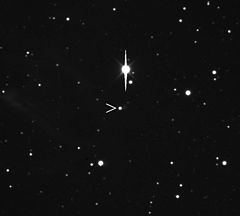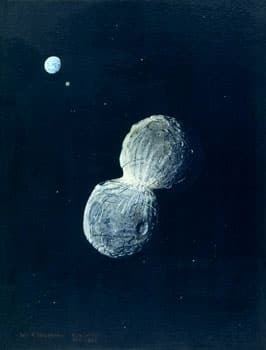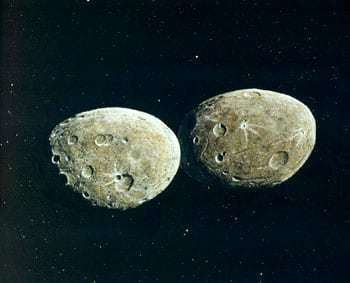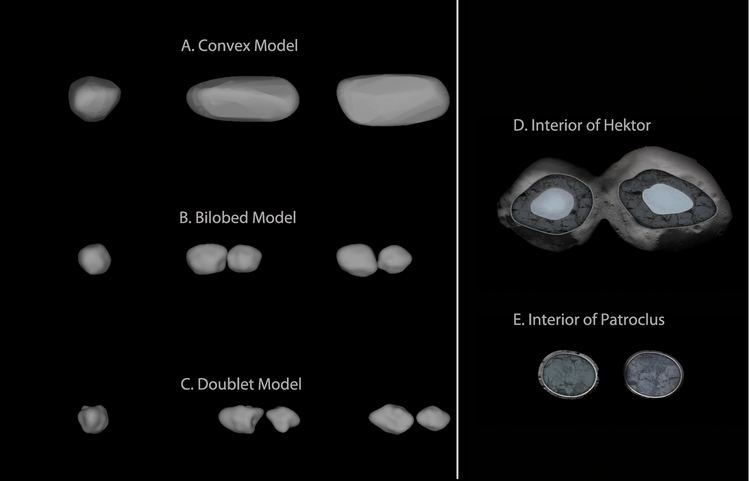Pronunciation /ˈhɛktɔːr/ HEK-tor Adjectives Hektorian Perihelion 762.20181 billion m Spectral type C-type asteroid | Discovery date 10 February 1907 Alternative names 1907 XM; 1948 VD Discovered 10 February 1907 Orbits Sun Discoverer August Kopff | |
 | ||
Similar 588 Achilles, Solar System, 87 Sylvia, Jupiter trojan, 4769 Castalia | ||
624 Hektor is the largest Jupiter trojan. It was discovered in 1907 by August Kopff.
Hektor is a D-type asteroid, dark and reddish in colour. It lies in Jupiter's leading Lagrangian point, L4, called the 'Greek' node after one of the two sides in the legendary Trojan War. Hektor is named after the Trojan hero Hektor and is thus one of two trojan asteroids that is "misplaced" in the wrong camp (the other one being 617 Patroclus in the Trojan node).

Contact binary plus moon

Hektor is one of the most elongated bodies of its size in the Solar System, being 370 × 200 km. It is thought that Hektor might be a contact binary (two asteroids joined by gravitational attraction) like 216 Kleopatra. Hubble Space Telescope observations of Hektor in 1993 did not show an obvious bilobate shape because of a limited angular resolution. On 17 July 2006, the Keck 10-meter-II-telescope and its laser guide star adaptive optics (AO) system indicated a bilobate shape for Hektor. Additionally, a 12-km-diameter moon of Hektor, S/2006 (624) 1, was detected orbiting with a semi-major axis of 623.5 km and an orbital period of 2.9651 day. It was confirmed with Keck observations in November 2011. Hektor is, so far, the only known binary trojan asteroid in the L4 point and the first known trojan with a satellite companion. 617 Patroclus, another large trojan asteroid located in the L5, is composed of two same-sized components.


